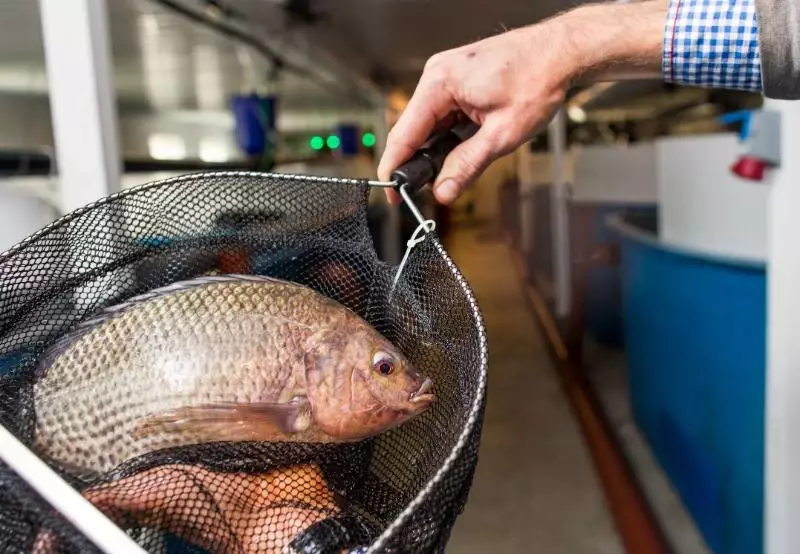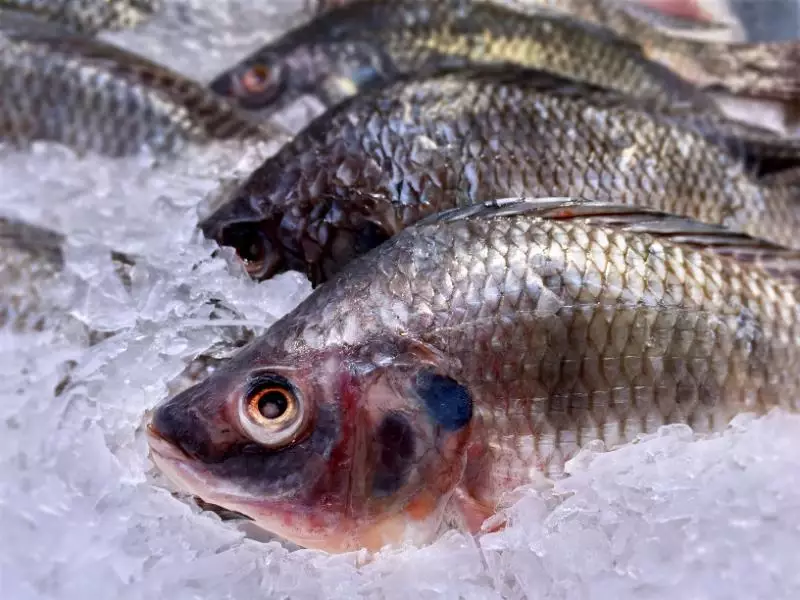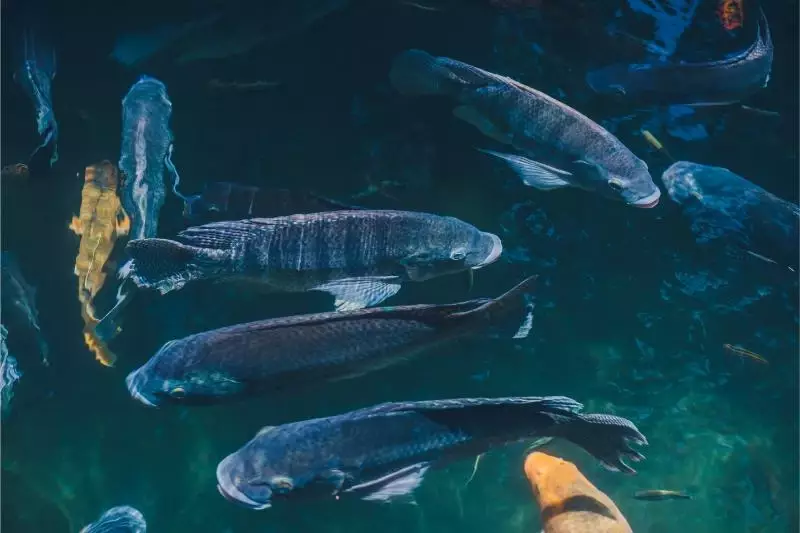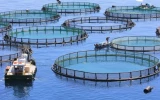Is Tilapia Farming Profitable? (2024 Breakdown)
Tilapia farming in 2024 continues to present itself as a profitable business, especially due to its adaptability and the growing demand for sustainable seafood. Your venture into this form of aquaculture could be successful as tilapia are fast-growing and hardy, making them ideal for various production systems, including traditional ponds, aquaponics, and recirculating aquaculture systems (RAS).
Tilapia farming can be profitable with proper management. Initial setup costs for a small-scale operation can range from $8,000 to $10,000 per acre. Operating costs include feed, labor, and utilities. Profit margins often exceed 30% with efficient operations, market access, and control over feed and energy costs.
Globally, countries like China, Indonesia, and others in South Asia and Latin America are significant consumers. Growing consumption in these markets can lead to increased revenue. Learn more insider tips below on how to maximize profits.
Summary
- Revenue streams for tilapia farming extend beyond the sale of live fish to include processed products, breeding stock, aquaponics produce, recreational fishing, educational services, consulting, fish feed production, and online sales, among others.
- Effective cost management strategies for maximizing profits in tilapia farming include selecting high-quality fingerlings, optimizing feed conversion ratios, maintaining water quality, implementing stringent biosecurity measures, and adapting to climate change impacts on aquaculture conditions.
- Key global markets for tilapia include China, Indonesia, South Asia, and Latin America, with a positive market outlook for 2024.

On this page:
Profitability of Tilapia Farming
Your profit is primarily determined by the market price of tilapia and your ability to manage costs effectively.
| Quick Overview | Amount |
|---|---|
| Annual production | 10–50 tons |
| Market price | $2–$5 |
| Revenue range | $20,000–$250,000 |
Note: The market price per kilogram of tilapia can fluctuate based on quality, market demand, and geographic location.

As of January 2024, the approximate wholesale price range for US tilapia is between $2.07 and $4.15 per kilogram, or between $0.94 and $1.88 per pound. Retail prices can vary, for example, a frozen tilapia fillet is listed at $5.99 per pound on Aqua Best.
Live fish sold directly from the producer can range from $2.20 to $6.60 per kilogram in the U.S. For smaller quantities, such as fingerlings, prices can average around $1.00 per inch.
Your returns will be influenced by the market outlook and demand. The price of tilapia has been relatively stable, but any value-add, such as organic certification or specialized processing, can increase profitability.
- Typical profit margin: 20% to 40%
- Estimated ROI: 1 to 3 years
Factors like efficient feed conversion ratios and low mortality rates due to disease impact profit margins. To enhance your ROI, streamline production and tap into burgeoning markets.
According to RaboResearch, Asia's tilapia production is projected to see growth, suggesting a favorable market outlook for 2024.'
The global tilapia production is expected to grow, especially in regions like Egypt, South Asia, Africa, and Brazil. This suggests a positive outlook on the market demand for tilapia.

- Tilapia aquaculture is poised to meet the increasing global demand for protein-rich food. Learn more about this here.*
Revenue streams of tilapia farming
Tilapia farming can generate revenue through several streams, depending on the scale, location, and business model of the farm. Here are some potential revenue streams for tilapia farming:
-
Sale of live fish: Selling live tilapia to local markets, restaurants, and directly to consumers can be a primary source of revenue. Live fish are often preferred for their freshness.
-
Processed products: Offering processed tilapia products such as fillets, whole gutted fish, or smoked tilapia can attract a wider range of customers and add value to the product.
-
Breeding stock: Selling fingerlings or breeding pairs to other tilapia farms or hobbyists can be lucrative, especially if the farm breeds high-quality or specialized strains.
-
Aquaponics: Integrating aquaponics, which combines fish farming with hydroponic plant production, can create an additional revenue stream through the sale of organic or locally-grown produce.
-
Recreational fishing: Some farms offer catch-and-release or catch-and-keep fishing experiences, which can be a source of income as well as a marketing tool.
-
Educational tours and workshops: Providing tours, workshops, or classes related to aquaculture and sustainable farming can generate additional income and raise awareness of the farm's brand.
-
Consulting services: Experienced tilapia farmers can offer consulting services to new farmers or those looking to improve their operations.
-
Fish feed production: If the farm produces more feed than it needs, it can sell the excess to other farms.
-
Waste products: The byproducts of fish farming, such as fish waste, can be used as fertilizer or converted into biogas, providing an additional revenue stream or cost savings.
-
Online sales: Developing an online platform for selling tilapia can expand the market reach, especially if the farm offers shipping services for live or processed fish.
-
Cooperative ventures: Partnering with other local producers to create a cooperative can help in reducing costs, increasing bargaining power, and accessing new markets.
-
Value-added products: Creating marinated, seasoned, or ready-to-cook tilapia products can attract customers looking for convenience.
-
Subscriptions and Community-Supported Agriculture (CSA): Offering subscription services where customers receive regular deliveries of fresh fish can ensure a steady income stream.

Cost Breakdown and Analysis
At the heart of your expenditures is feed, often comprising up to 70% of total costs. Keep in mind that feed prices fluctuate, affecting the feed conversion ratio (FCR), which measures the efficiency of converting feed to edible weight.
| Initial Costs | Approximate Expenses |
|---|---|
| Hatchery setup | $5,000–$10,000 |
| Ponds/tanks | $2,000–$10,000 |
| Feed | $1,000–$5,000 |
| Labor | $2,000–$10,000 |
| Technology & upkeep | $2,000–$5,000 |
| Land (rental or purchase) | $5,000–$20,000 |
| Seedlings (fingerlings) | $500–$2,000 |
| Licenses and permits | $500–$2,000 |
| Miscellaneous | $1,000–$5,000 |
| Total initial investment | $19,000–$67,000 |
What's the minimum pond size for tilapia? Find out in this article.
Below is a simplified breakdown of annual costs for a moderate-sized tilapia farm:
| Annual Costs | Percentage of Total Costs |
|---|---|
| Feed | 70% |
| Labor | 10% |
| Land amortization | 5% |
| Equipment amortization | 5% |
| Utilities (water, electricity) | 5% |
| Other (seed, maintenance) | 5% |
Minimizing Costs and Maximizing Profits
Species selection
Start with selecting high-quality fingerlings; this is crucial for a good harvest. Ensure they are sourced from reputable hatcheries to avoid diseases, which can incur high costs later on.
Choosing the right species, such as the Nile tilapia, is crucial for maximum yield. These are known for their hearty nature and efficient feed conversion. Blue tilapia and Mozambique tilapia are known for their fast growth, which may translate to quicker profits.
Feed conversion ratio
Feed constitutes a large portion of your expenses. Opt for cost-effective feeds without compromising on nutritional value to achieve a favorable feed conversion ratio (FCR). Proper feed management can lower feed costs and improve growth rates. Use a feeding strategy that reduces wastage and matches the growth stages of your fish.

You want to optimize your feed conversion ratio, which indicates how well your fish convert feed into biomass. A lower FCR means your tilapia need less feed to gain weight, reducing one of your largest expenses.
Hatchery and breeding
Strong breeding programs with selective breeding can boost your stock quality, while maintaining a hatchery ensures a steady supply of fingerlings and fry.
Stocking densities and growth
You must balance your pond's stocking densities to optimize growth and minimize disease.
Water quality management
Regularly monitoring and maintaining optimal water quality is non-negotiable. Factors like oxygen levels and temperature affect tilapia health and growth rates.
Water quality is paramount in tilapia farming. Poor water can lead to disease and stunted growth. Investing in a recirculating aquaculture system (RAS) might have a higher initial cost but can save you money in the long run by maintaining high water quality with minimal water exchange.
Find out how to start a small fish farm with a breakdown of costs, proper setup, and selecting the right species in this article.
Biosecurity measures
Your farm's health requires stringent biosecurity measures to prevent or control disease outbreaks. Incorporating polyculture and ensuring biosecurity can protect and even enhance your farm's productivity.
Aquaponics and sustainability
Incorporating aquaponics may enhance sustainability, creating a symbiotic environment that can improve overall productivity.
Climate change impact
Remain vigilant against climate-induced changes in freshwater availability and temperature fluctuations, which directly impact fish health and pond culture conditions.



